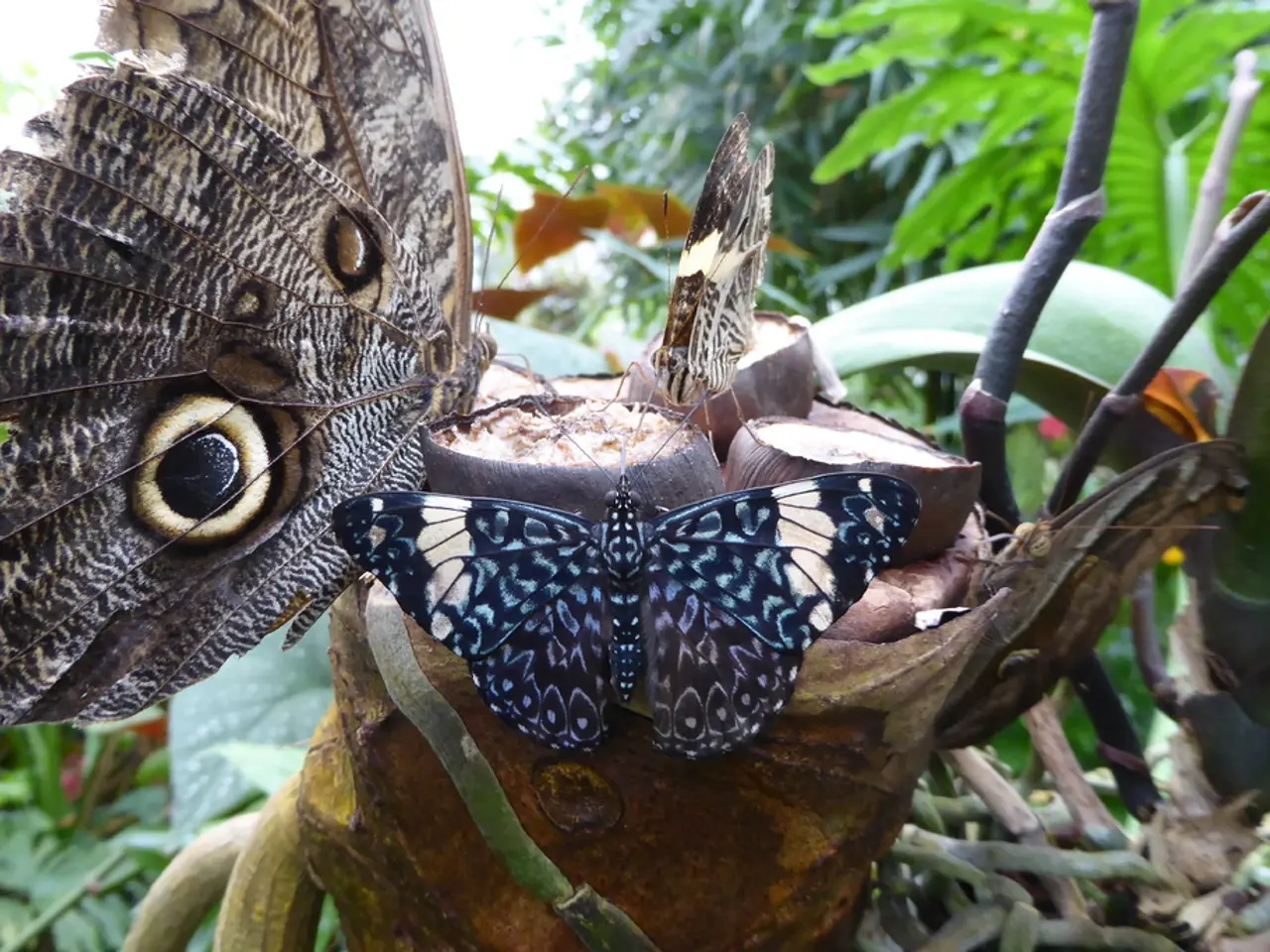Butterflies and Tropical Milkweed: Potential Dangers and Solutions
In the beautiful state of Minnesota, a seemingly innocuous plant has been causing concern for monarch butterflies. The tropical milkweed, with its impressive blossoms that bloom from June through November, has been found to prevent monarchs from starting their fall migration to Mexico.
This non-native species, known scientifically as Asclepias curassavica, has a negative impact on monarch butterflies compared to native milkweed. The main issues arise from the increased risk and spread of the protozoan parasite Ophryocystis elektroscirrha (OE), disruptions to monarch migration, and interference with their natural breeding cycles.
One of the key negative effects is the higher prevalence of the OE parasite. Tropical milkweed tends to harbor and spread OE spores more than native species, leading to higher infection rates among monarchs. This weakens or even kills them.
Another concern is the disruption of migratory behavior. Monarch larvae reared on tropical milkweed show reduced development of migratory traits, undermining their ability to undertake long migrations.
Tropical milkweed's continuous growth can also cause monarchs to breed year-round rather than enter reproductive diapause, which is essential for migration and overwintering.
Moreover, tropical milkweed is invasive in some areas, potentially displacing native milkweed species that are better suited for monarch health and lifecycle.
In contrast, native milkweed species are aligned with monarchs' evolved life cycle, supporting healthier populations with lower parasite loads and promoting natural migration and breeding patterns.
Given these issues, experts recommend planting native milkweed and removing tropical milkweed where it is non-native, especially in the U.S., to help conserve monarch butterfly populations.
It's important to note that tropical milkweed can still be grown safely in colder-winter areas, as it will die back with the first frost. However, in warmer areas, it can become a perennial and thrive year-round, posing a greater threat to monarchs.
For those seeking alternatives to tropical milkweed, consider planting native milkweed or wildlife-friendly options such as Yarrow (Achillea millifolium) or Zinnia (Zinnia elegans). These plants offer drought-tolerant properties and attractive blossoms, providing a beneficial habitat for pollinators without the risks associated with tropical milkweed.
As climate change continues to warm our planet, tropical milkweed may successfully overwinter in more and more locations, enlarging the scope of the OE issue. By choosing native or alternative plants, we can help ensure the survival of these iconic migratory butterflies.
Read also:
- Unveiling of Advanced Ochre Tools Uncovers Complicated Early Human Craftsmanship
- Financial Management Operations (FMO) spearheads a €130 million syndicated loan for QNB Leasing, a Turkish financial institution.
- Dishwasher Failures: Identifying Common Problems and Solutions
- Guide to Environmentally Friendly Skincare Packaging Solutions







